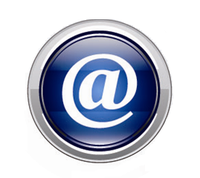For several years, new information and communication technologies (ICT) have radically changed our way of working and the environment we work in.
The advent of a more accessible Internet, without borders or boundaries, has created profound changes. From a small defined workplace consisting of small teams we have moved on to a workplace that comprises multiple collaborators and partners.

Mobile jobs, working remotely and even telephone based work have all come into their own.
Managing and organizing your work on-line is now accessible to all
We have all asked ourselves the question : how can I manage and organize my professional responsibilities effectively, using the most up-to-date ways of working ?
We are, more than ever, required to work in a group on a project, with more stringent deadlines. Feedback is expected to be rapid.
The classic desktop tools (Word, Excel, Power Point, etc.) and e-mail were, for a time, an adequate answer to this question and have proven their worth for a long time.
Nevertheless, we now begin to ask ourselves whether they (especially e-mail), have not begun to show some signs of ageing, particularly in terms of organization and efficiency ?
Can we now talk about a post e-mail era ?
Philippe Istria, speaks of the "lethargy of e-mail" and suggests five options to avoid using it :
- Set yourself some basic rules and strict to them
- Adopt a "no mail Friday" and physically go meet your team members.
- Start using and benefiting from the use of collaborative tools.
- When connecting with people outside of your company, consider using social media platforms.
In his article, Mr. Istria argues that the limitations of the tool that revolutionized the early 1990s have now been reached.
He states the following : "Twenty years later, the picture is more blurred: your inbox is flooded with unwanted messages and you spend an inordinate amount of time sorting out which to delete and which to respond to." Logically, the question arises : "Can we get rid of e-mail ?"

Philippe Istria answers this question by advancing the idea that it is possible to liberate oneself, simply by adopting some basic techniques.
Mr. Istria devotes part of his article to the solutions he proposes, leveraging the use of collaborative tools within the company, capitalizing on Thierry Breton's idea, (CEO of Atos) for whom the solution for eliminating e-mail is to leverage the use of collaborative tools and community platforms.
Collaborative work: e-mail or collaborative tools ?
Using e-mail as a collaborative tool is not without risk. It involves many steps :
- having the correct e-mail address of the recipient.
- being certain that he/she has received the e-mail.
- ensuring that the e-mail is not directed to "Spam" or "Junk Mail".
- not sending attachments that are too large.
- not getting sidelined by the multiplication of messages.
However, we tend to work on projects that are changing and increasingly need to be changed quickly and easily. But it is not always easy to make changes, large or small, because of each project many, distinct parameters. Even more so when your employees are not in the same place as you.

Actually, phoning or e-mailing each of your team members to inform them of any changes means spending a significant amount of time on something without the certainty that each person has correctly noted the change.
Choosing to work in a structured, collaborative environment
It has become necessary to work in a “connected” manner in a structured, collaborative environment to be able to follow the progress of your work.
This is the goal that Planzone achieves by offering: a collaborative workspace that offers in terms of collaboration and project management :
- the creation of shared/collaborative to-dos.
- a dedicated discussion area.
One of the benefits of such an environment is, among other things, a decrease in unwarranted traffic, such as e-mail and telephone calls and a better overview of the progress of your projects.
How to implement collaborative solutions in a business ?
Several options are available : if you do choose to implement collaborative solutions in your company, it is important that they are introduced gradually and in a controlled manner so as not to upset your existing procedures, eg : by using a third party to assist you.
Your Planzone team.
support@planzone.com